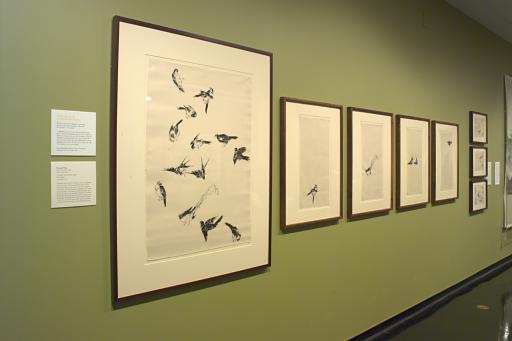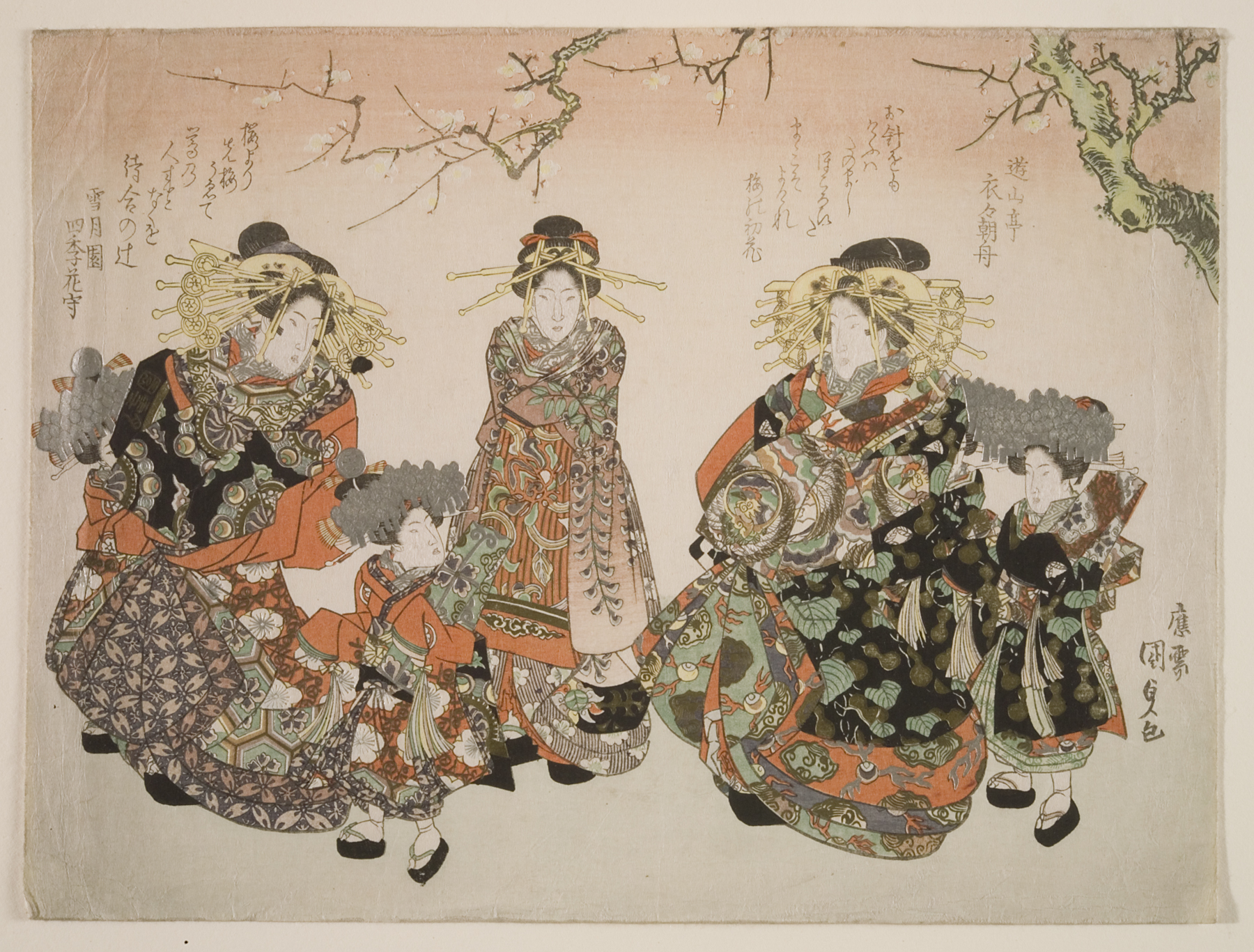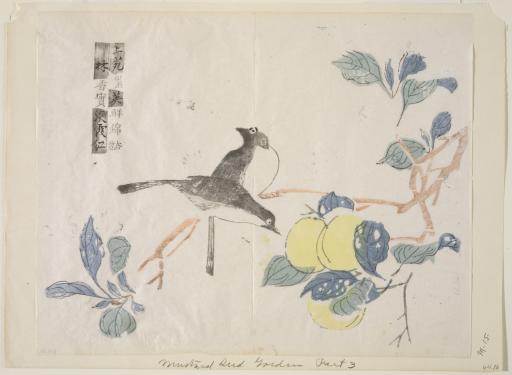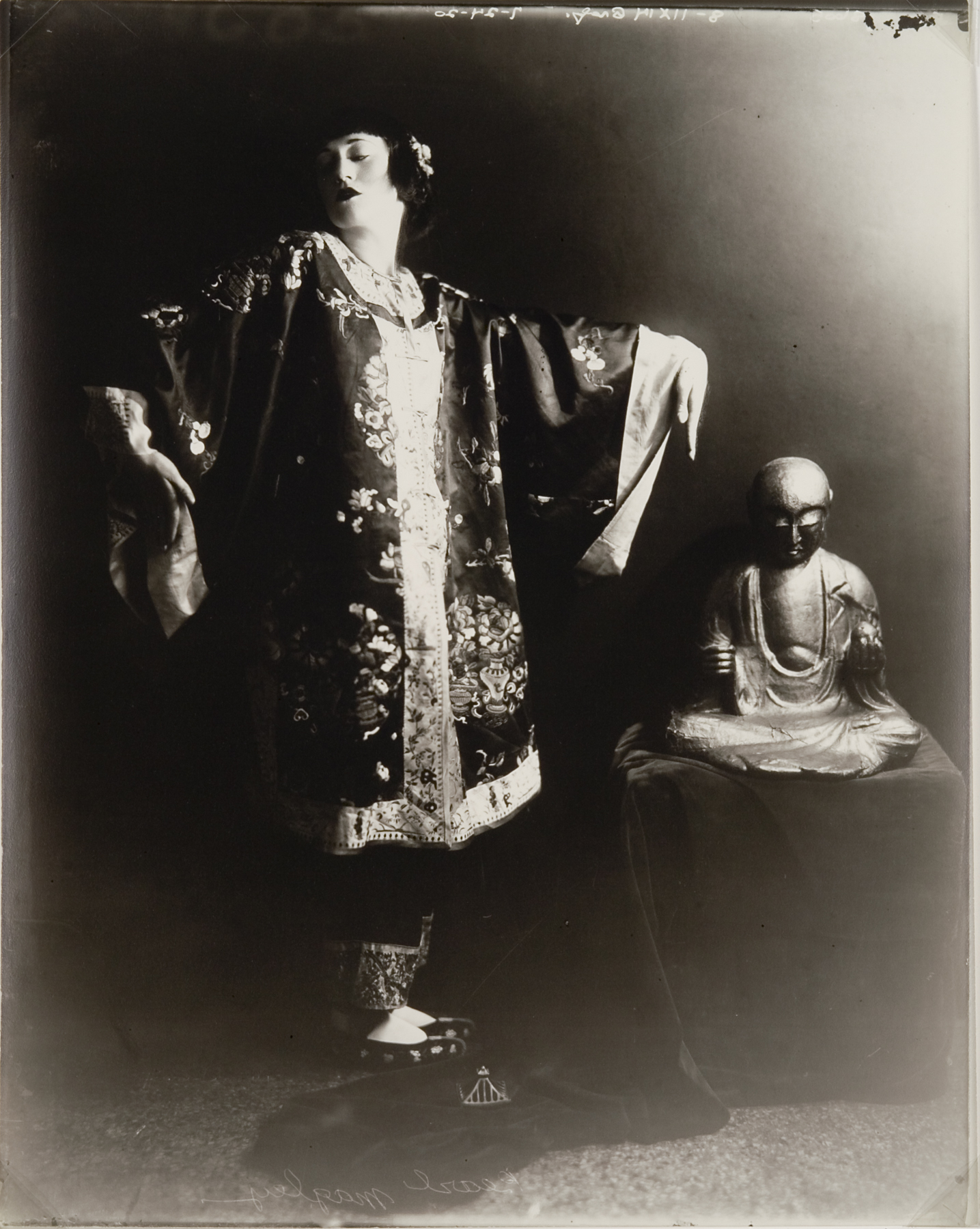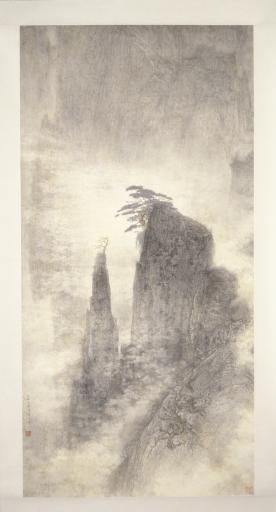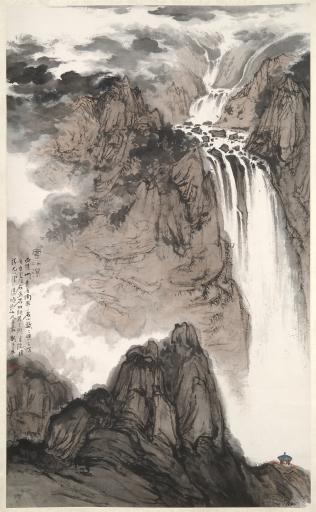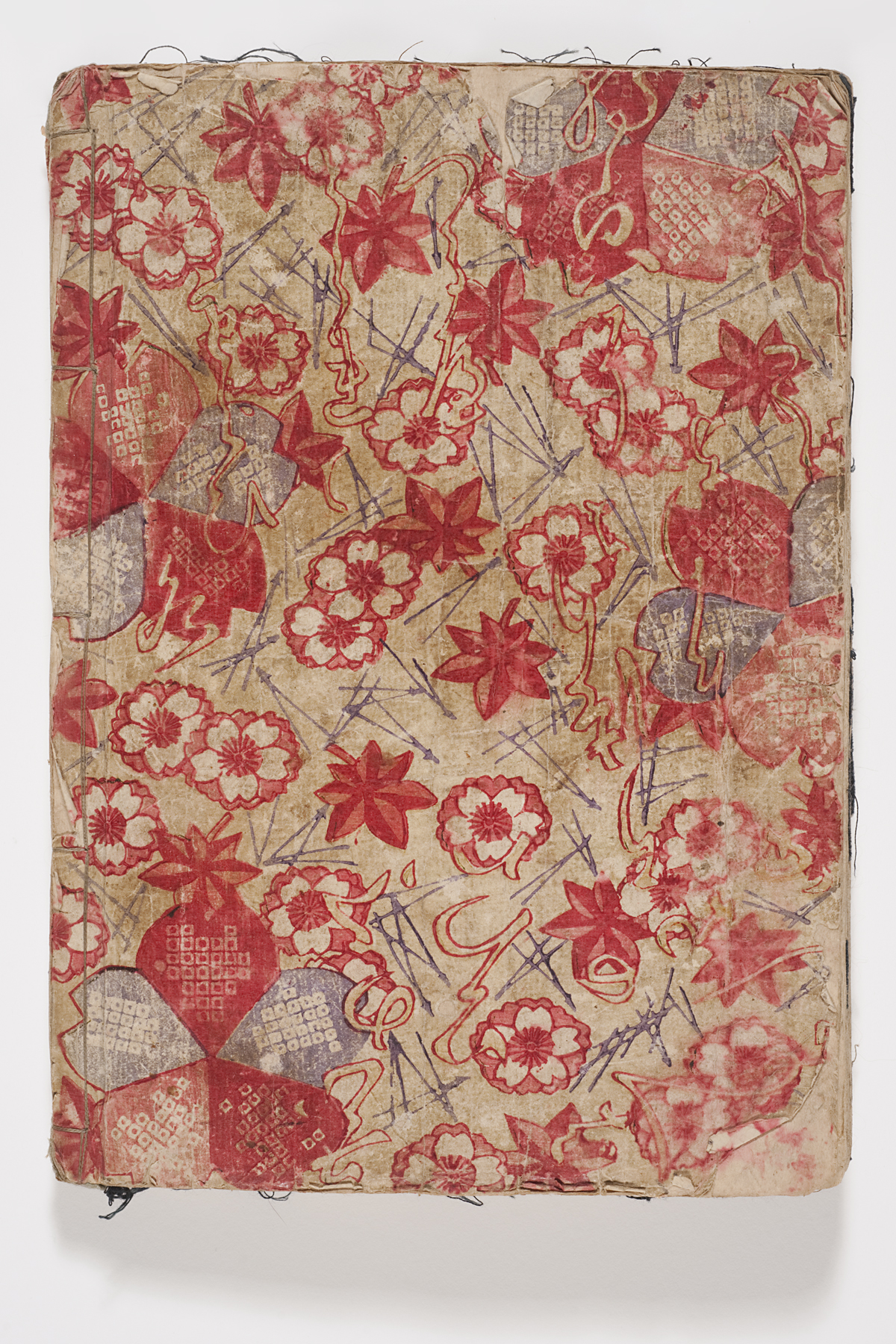Didactic – Art Minute
Episode 64
Mar-2006, Alison Miller
I’m David Cateforis with another Art Minute from the Spencer Museum of Art. Among the most common subjects of Japanese prints during the Edo period are actor pictures. The beginnings of both the kabuki theatre and actor prints in Japan can be traced to the early seventeenth century. During the Edo period, from 1600-1868, kabuki actors were icons of popular culture-celebrities who set trends much as movie stars do today. Kabuki images generally emphasize the appearance of the character rather than the actor, but by the 1760s, artists began to create more realistic portraits. As an additional identity marker, the actor’s personal seal was often included as a pattern or medallion on his costume. Because of concerns over lewd behavior, women were banned from the kabuki stage in 1629, resulting in the creation of the specialized role of the onnagata-a male actor playing a female role. The print artist Torii Kiyomasu II depicts two male actors-one of them in the onnagata role-in a print from the 1720s shown in Transformations, an exhibition that runs through June 18 in the museum’s Asia Gallery. With thanks to Alison Miller for her text, from the Spencer Museum of Art, I’m David Cateforis.

